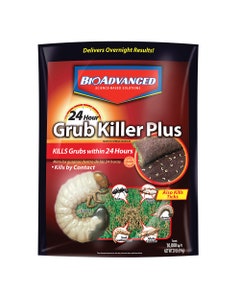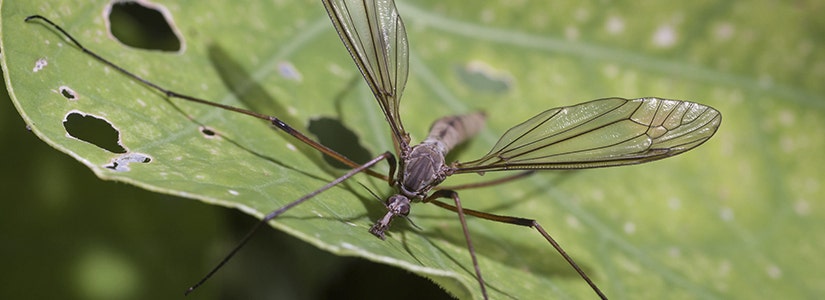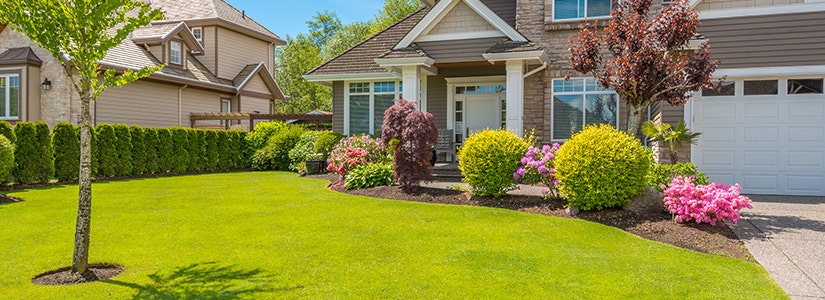.jpg)
.jpg)
- Home
- Solution Center
- Learn
- Lawn and Landscape
- Lawn Care: How To Repair Bare Grass Patches
Lawn Care: How To Repair Bare Grass Patches
As lawns emerge from winter dormancy, it's exciting to watch them green up. What's disappointing, though, is discovering that the lush lawn you put to bed late last fall is awakening with brown or bare spots.
The toughest part of dealing with lawn spots is discovering what's causing them. Learn 10 common reasons for spring lawn spots and what you can do to fix them.
Cause: Dogs
If your dog has used the same area of the lawn all winter long (especially in snow-prone zones), you may discover brown or bare spots.
Solution: If the grass isn't dead, flush the area with water (spring rains help with this). Mow higher in this area until the spot greens up. If the grass is dead, reseed. Create a mulched area in an inconspicuous part of your yard and train your dog to use that area.
Cause: De-icing methods
The salts in de-icing materials can burn grass. Typically this damage appears as a narrow band along a walkway, street or driveway. Damage may also occur where you pile snow from streets or sidewalks.
Solution: Before reseeding, flush the area with water. Let spring rains help with this task. Reseed with salt-tolerant grass varieties. Frequently these grasses are included in mixes intended for boulevard plantings, which are sold in regions where winter requires salt-laden road treatments. Check with independent garden centers for these blends.
Cause: Object left on the lawn
Objects that sit on a lawn through winter – even something as small as a roof shingle – can damage grass. Fallen leaves that linger on lawns through winter can also harm turf. In northern regions, the problem is compounded by snow, which can hide objects that might have blown into your yard.
Solution: Remove the object, rake out any dead grass, and reseed as needed. If grass is only yellow and doesn't easily pull free of soil, rake it gently. Wait to see if it greens and sprouts from the crown before reseeding.
Cause: Snow mold
Circular tan patches of grass may or may not coalesce to form a larger patch of what looks like dead grass. Called Snow Mold, these patches frequently only affect grass blades, not crowns.
Solution: Rake Snow Mold spots to separate matted blades. Most often, grass grows out of the disease. If not, reseed.
Cause: Meadow Voles
These tiny, mouse-like rodents create narrow trenches through grass. Typically their damage occurs beneath snow cover in lawns adjacent to natural, vacant or undeveloped areas.
Solution: By spring, voles have long since scurried into thicker cover, but their trails remain. Usually the damage focuses on grass blades, not crowns, so grass sprouts and fills in. If damage is extensive, rake out dead grass, add soil to trenches, and seed.
Cause: Grub feeding
If Grubs fed on your lawn last fall, they could have damaged grass enough to cause brown and bare spots this spring.
Solution: Learn more about lawn grubs, including how to treat them.
Cause: Exhaust
Has your lawn hosted any idling, motorized equipment since last fall? A snowblower, tree trimming truck, holiday visitor's vehicle – any prolonged exposure to engine exhaust (and heat) quickly destroys grass.
Solution: Rake and reseed bare spots in the lawn.
Cause: Spills
Gasoline and fertilizer spills can wipe out grass in a flash. Use caution when filling gas tanks and spreaders. Do these activities on a concrete or gravel surface — somewhere you won't risk killing vegetation.
Solution: When fuel spills occur, grab the hose and flush the area well. For fertilizer spills, gather particles with a trowel or spade. Use a broom to disperse remaining fertilizer into surrounding grass. You can also mow over fertilizer using a bag attachment to collect particles.
Cause: Thatch
A too-thick thatch layer sheds water, creating dry soil beneath.
Solution: Dethatching is the answer. It helps lawns absorb water and grow stronger, deeper roots
Learn more about dethatching.
Cause: Soil compaction
Compacted soil can create bare spots. This occurs naturally – and more frequently – with heavy clay soils. Foot traffic, heavy equipment, long-lasting piles of heavy, wet snow, and even heavy rain can worsen compaction. When soil compacts, grass eventually stops growing.
Solution: Aeration relieves compaction. Learn about aerating; and how to aerate properly.
Help lawns absorb water efficiently by limiting thatch and aerating on a regular basis.
A little lawn maintenance can go a long way toward making sure you have the spring lawn you've envisioned. For more lawn care resources, visit our Learning Center.














